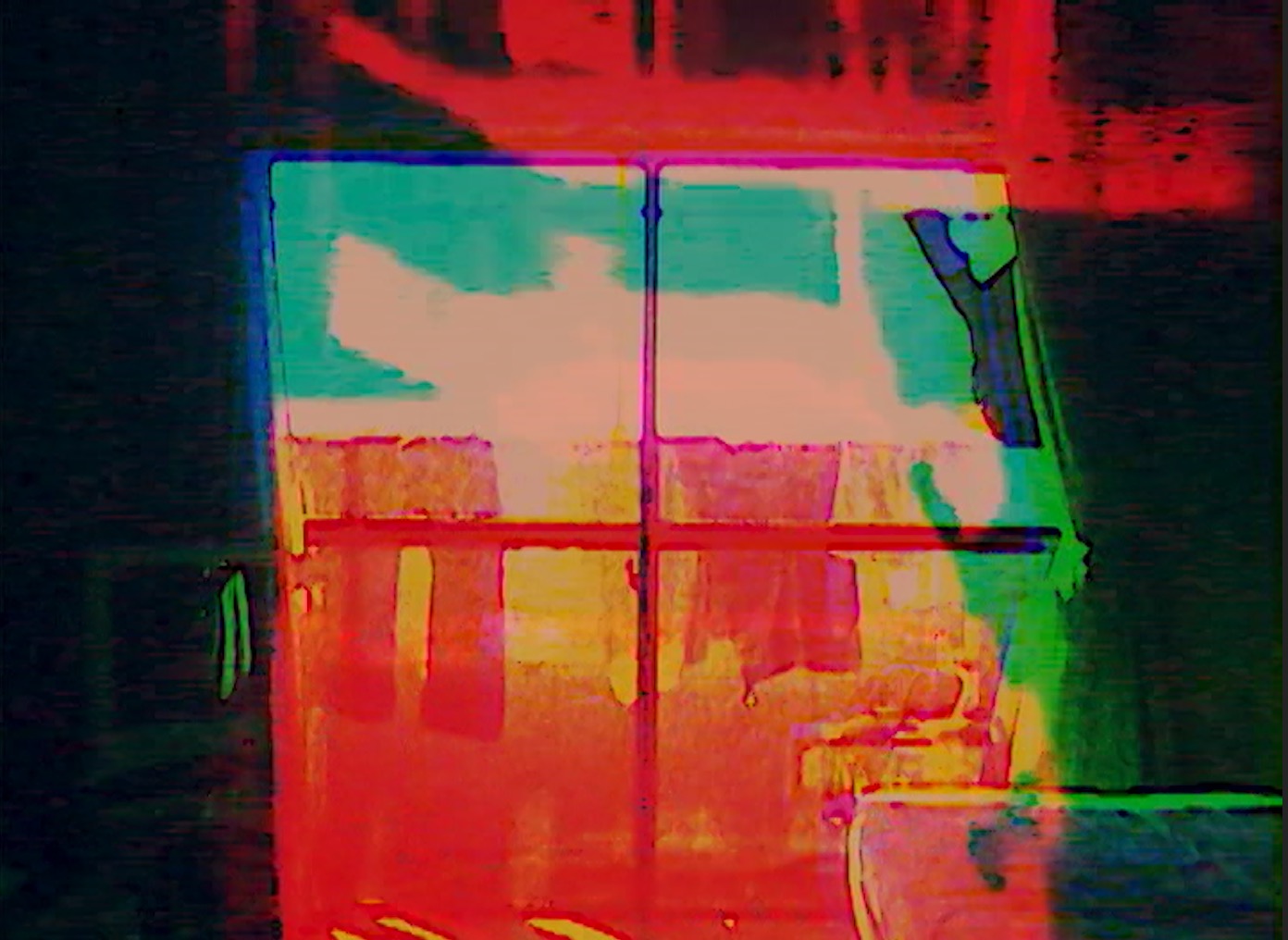100 Photography Alumni
Curator: Stephan Apicella-Hitchcock
The Lipani Gallery
Exhibition Dates: May 31–September 14, 2018
Reception: October 17, 6 pm – 8 pm
Fordham University at Lincoln Center
113 West 60th Street at Columbus Avenue
New York, NY 10023
*The galleries are open from 9 am to 9 pm every day except on university holidays
The current exhibition at Fordham University's Lipani Gallery,
100 Photography Alumni, features one hundred photography alumni from across twenty years. Each photographer was asked to submit four images of their choice, which were produced as postcards. This “deck” of cards was shuffled and the images installed from left to right repeatedly circling the gallery. Despite the fact that the image sequence is random, interesting juxtapositions occur of content, geography, and era.
Press: Seiwell, Emma. “Lipani Gallery Chronicles the Paths of Fordham Alumni.”
The Observer, Fordham University, 26 Sept. 2018, fordhamobserver.com/35589/features/lipani-gallery-chronicles-the-paths-of-fordham-alumni/.
Participants:
Last Name, First Name, Caption information (optional)
ABRAHAMS_TESSA_01.JPG
ABRAHAMS_TESSA_02.JPG
ABRAHAMS_TESSA_03.JPG
ABRAHAMS_TESSA_08.JPG
Allocca_Liz_1.jpg
Allocca_Liz_2.jpg
Allocca_Liz_3.jpg
Allocca_Liz_4.jpg
Anacker_Samuel_1.jpg
Anacker_Samuel_2.jpg
Anacker_Samuel_3.jpg
Anacker_Samuel_4.jpg
Argast_Deirdre_1.jpg
Argast_Deirdre_2.jpg
Argast_Deirdre_3.jpg
Argast_Deirdre_4.jpg
BALDWIN_01.jpg
BALDWIN_02.jpg
BALDWIN_04.jpg
BALDWIN_05.jpg
Bandea_Alexandra_01.jpg
Bandea_Alexandra_03.jpg
Bandea_Alexandra_04.jpg
Bandea_Alexandra_06.jpg
BART_01.JPG
BART_03.JPG
BART_07.JPG
BART_09.JPG
BASHAW_04.JPG
BASHAW_06.JPG
BASHAW_08.JPG
BASHAW_10.JPG
Basile_Jaclyn_001.JPG
Basile_Jaclyn_003.JPG
Basile_Jaclyn_004.JPG
Basile_Jaclyn_005.JPG
Berkova_Mimi_1.JPG Her Dinner At Work” Chiang Mai, Thailand 2013
Berkova_Mimi_2.JPG “I Stole This Moment In Time” Manali, India 2013
Berkova_Mimi_3.JPG “To Be Kissed By The Sun” West Indies Day Parade, Brooklyn, NY 2008 Berkova_Mimi_4.JPG “A Glance Of Love Through The Fire” Ko Phi Phi Don Island, Thailand 2013
BOHEN_01.JPG
BOHEN_02.JPG
BOHEN_05.JPG
BOHEN_10.JPG
Boit_1.JPG
Boit_2.JPG
Boit_3.JPG
Boit.JPG
Butler_Ildiko_1.JPG
Butler_Ildiko_2.JPG
Butler_Ildiko_3.JPG
Butler_Ildiko.JPG
Canner_Charlotte_1.jpg
Canner_Charlotte_2.jpg
Canner_Charlotte_3.jpg
Canner_Charlotte_4.jpg
Carrizales_1.JPG
Carrizales_4.JPG
Carrizales_Kirstie_2.JPG
Carrizales_Kirstie_3.JPG
Chamberlain_Melanie_05.JPG
Chamberlain_Melanie_11.JPG
Chamberlain_Melanie_12.JPG
Chamberlain_Melanie_15.JPG
Chang_Raymond Sung Ho_04.jpg
Chang_Raymond Sung Ho_07.jpg
Chang_Raymond Sung Ho_08.jpg
Chang_Raymond Sung Ho_09.jpg
Colacicco_Apollonia_1_Paris, 2017.jpg
Colacicco_Apollonia_2_Queens, 2015.jpg Colacicco_Apollonia_3_Montevideo, 2013.jpg Colacicco_Apollonia_4_Coney Island, 2017.jpg
Cordi_Kristina_007.JPG
Cordi_Kristina_008.JPG
Cordi_Kristina_009.JPG
Cordi_Kristina_012.JPG
De_Carion_Oliver_013.JPG
De_Carion_Oliver_014.JPG
De_Carion_Oliver_016.JPG
De_Carion_Oliver_018.JPG
DeBonis_Andrea_019.JPG
DeBonis_Andrea_021.JPG
DeBonis_Andrea_022.JPG
DeBonis_Andrea_023.JPG
Deitz_Marc.jpg
Deitz_Marc1.jpg
Deitz_Marc2.jpg
Deitz_Marc3.jpg
DeMeo_Nicole_1.jpg
DeMeo_Nicole_2.jpg
DeMeo_Nicole_3.jpg
DeMeo_Nicole_4.jpg
DiPane_Drew_025.JPG
DiPane_Drew_026.JPG
DiPane_Drew_027.JPG
DiPane_Drew_030.JPG
DISALVO_02.jpg
DISALVO_04.jpg
DISALVO_07.jpg
DISALVO_11.jpg
DOHENY_KATE_03.jpg
DOHENY_KATE_05.jpg
DOHENY_KATE_06.jpg
DOHENY_KATE_08.jpg
Dominoe_Farris-1.jpg
Dominoe_Farris-2.jpg
Dominoe_Farris-3.jpg
Dominoe_Farris-4.jpg
Edwards_Tiffany_1.jpg
Edwards_Tiffany_2.jpg
Edwards_Tiffany_3.jpg
Edwards_Tiffany_4.jpg
Fiore_Michael 18.jpg
Fiore_Michael 36.jpg
Fiore_Michael .jpg
Fiore_Michael 02.jpg
FLYNN_02.jpg
FLYNN_05.jpg
FLYNN_06.jpg
FLYNN_09.jpg
Folsom_Marisa_04.jpg
Folsom_Marisa_05.jpg
Folsom_Marisa_09.jpg
Folsom_Marissa_01b.jpg
Franks_Jackie_03.jpg
Franks_Jackie_05.jpg
Franks_Jackie_07.jpg
Franks_Jackie_11.jpg
FRODIGH_04.jpg
FRODIGH_05.jpg
FRODIGH_07.jpg
FRODIGH_08.jpg
Giunta_Gabriella_1.JPEG.jpg
Giunta_Gabriella_2.JPEG.jpg
Giunta_Gabriella_3.JPEG.jpg
Giunta_Gabriella_4.JPEG.jpg
Greenberg_Gabrielle 004.jpg
Greenberg_Gabrielle 009.jpg
Greenberg_Gabrielle 012.jpg
Greenberg_Gabrielle 013.jpg
GREGOR_01.jpg
GREGOR_05.jpg
GREGOR_07.jpg
GREGOR_08.jpg
Gunhouse_Carl_1.jpg
Gunhouse_Carl_2.jpg
Gunhouse_Carl_3.jpg
Gunhouse_Carl_4.jpg
Hartnett_Hayden1.jpg
Hartnett_Hayden2.jpg
Hartnett_Hayden3.jpg
Hartnett_Hayden4.jpg
Hellauer_Molly_031.JPG
Hellauer_Molly_032.JPG
Hellauer_Molly_035.JPG
Hellauer_Molly_036.JPG
Hemmert_Adam_1.jpg
Hemmert_Adam_2.jpg
Hemmert_Adam_3.jpg
Hemmert_Adam_4.jpg
Heremaia_Kendell_02.jpg
Heremaia_Kendell_04.jpg
Heremaia_Kendell_15.jpg
Heremaia_Kendell_16.jpg
Hua_Qinrui_1.jpg
Hua_Qinrui_2.jpg
Hua_Qinrui_3.jpg
Hua_Qinrui_4.jpg
Kalil_Michelle_01.jpg
Kalil_Michelle_02.jpg
Kalil_Michelle_03.jpg
Kalil_Michelle_04.jpg
KEININGHAM_01.jpg
KEININGHAM_06.jpg
KEININGHAM_08.jpg
KEININGHAM_10.jpg
Kelly_Shannon_043.JPG
Kelly_Shannon_044.JPG
Kelly_Shannon_045.JPG
Kelly_Shannon_047.JPG
Khan_Aseah_DSF2350.jpg
Khan_Aseah_DSF3156.jpg
Khan_Aseah_DSF3421.jpg
Khan_Aseah_DSF7964.jpg
Kim02.JPG
Kim06.JPG
Kim08.JPG
Kim18.JPG
Kirsch_Leah_01_1.JPG
Kirsch_Leah_02_1.JPG
Kirsch_Leah_03_1.JPG
Kirsch_Leah_06_1.JPG
Kiyono_Mika_1.JPG
Kiyono_Mika_2.JPG
Kiyono_Mika_3.JPG
Kiyono_Mika_4.JPG
Kontos_Angelos_1.jpg
Kontos_Angelos_2.jpg
Kontos_Angelos_3.jpg
Kontos_Angelos_4.jpg
Krakowski_Jackie_1.jpg
Krakowski_Jackie_2.jpg
Krakowski_Jackie_3.jpg
Krakowski_Jackie_4.jpg
Langley_Isabelle_02_1.JPG
Langley_Isabelle_03_1.JPG
Langley_Isabelle_04_1.JPG
Langley_Isabelle_05_1.JPG
Lazzaro_Shaunna_049.JPG
Lazzaro_Shaunna_051.JPG
Lazzaro_Shaunna_053.JPG
Lazzaro_Shaunna_054.JPG
LILY_GRACE_03.jpg
LILY_GRACE_04.jpg
LILY_GRACE_06.jpg
LILY_GRACE_08.jpg
Lin_Chloe .jpg
Lin_Chloe 3.jpg
Lin_Chloe 4.jpg
Lin_Chloe Final1.jpg
Low_Emily_1.JPEG.jpg
Low_Emily_2.JPEG.JPG
Low_Emily_3.JPEG.jpg
Low_Emily_4.JPEG.jpg
MAHONEY_CARRIE_05.jpg
MAHONEY_CARRIE_06.jpg
MAHONEY_CARRIE_10.jpg
MAHONEY_CARRIE_13.jpg
Mainguy02.JPG
Mainguy03.JPG
Mainguy05.JPG
Mainguy09.JPG
Mavrovitis-Campbell_Katie _1.JPEG.jpg -
Mavrovitis-Campbell_Katie _2.JPEG.jpg -
Mavrovitis-Campbell_Katie _3.JPEG.jpg -
Mavrovitis-Campbell_Katie _4.JPEG.jpg -
McCracken_James_1.jpg
McCracken_James_2.jpg
McCracken_James_3.jpg
McCracken_James_4.jpg
Monastra_Carolyn_1.jpg - Icebergs in Jökulsárlón Lagoon, Iceland Monastra_Carolyn_2.jpg - House damaged by Hurricane Sandy, Mantoloking, New Jersey
Monastra_Carolyn_3.jpg - Storm brewing over the Rio Negro, Amazon, Brazil
Monastra_Carolyn_4.jpg - Trees burned in wildfire, Kosciuszko National Park, Australia
Moreno_Analissa_1.jpg
Moreno_Analissa_2.jpg
Moreno_Analissa_3.jpg
Moreno_Analissa_4.jpg
Murphy_Catherine-1.jpg Aruba
Murphy_Catherine-2.jpg Bellport, NY (1)
Murphy_Catherine-3.jpg Bellport, NY (2)
Murphy_Catherine-4.jpg New Orleans
Nelson_Chris_01.jpg
Nelson_Chris_05.jpg
Nelson_Chris_09.jpg
Nelson_Chris_DSF7009.JPG
Noyes_Blake_1.jpg
Noyes_Blake_2.jpg
Noyes_Blake_3.jpg
Noyes_Blake_4.jpg
O'Flynn_Erin-1.jpg Edgar & Greenwich Street, New York, NY, 2018 O'Flynn_Erin-2.jpg Sandia Man Cave, Albuquerque, NM, 2017 O'Flynn_Erin-4.jpg Green-Wood Cemetery, Brooklyn, NY, 2018 O'Flynn_Erin3.jpg Sperlonga, Italy, 2016
O'Rourke_Devon 01.jpg
O'Rourke_Devon 02.jpg
O'Rourke_Devon08.jpg
O'Rourke_Devon15.jpg
Partin_Ted__2.jpg
Partin_Ted_1.jpg
Partin_Ted_3.jpg
Partin_Ted_4.jpg
Puchinskaya_Dorina_02.jpg
Puchinskaya_Dorina_07.jpg
Puchinskaya_Dorina_08.jpg
Puchinskaya_Dorina_09.jpg
Puntillo_Marie_056.JPG
Puntillo_Marie_057.JPG
Puntillo_Marie_059.JPG
Puntillo_Marie_060.JPG
REID_02.jpg
REID_06.jpg
REID_07.jpg
REID_12.jpg
Robak_Marika_1.jpg
Robak_Marika_2.jpg
Robak_Marika_3.jpg
Robak_Marika_4.jpg
Robbins_1.jpg
Robbins_3.jpg
Robbins_Sam_2.JPG
Robbins_Sam_3.JPG
Roemaet_1.jpg
Roemaet_2.jpg
Roemaet_3.jpg
Roemaet_4.jpg
ROSARIO_01.jpg
ROSARIO_03.jpg
ROSARIO_04.jpg
ROSARIO_11.jpg
Rusnack_Barbara_02.jpg
Rusnack_Barbara_05.jpg
Rusnack_Barbara_06.jpg
Rusnack_Barbara_11.jpg
Salinas_Teresa_1.jpg
Salinas_Teresa_2.jpg
Salinas_Teresa_3.jpg
Salinas_Teresa_4.jpg
Santoro_Giovani_1.jpg — Hevel
Santoro_Giovani_2.jpg — Hevel
Santoro_Giovani_3.jpg — Hevel
Santoro_Giovani_4.jpg — Hevel
Santos_Luis_1.JPEG
Santos_Luis_2.JPEG
Santos_Luis_3.JPEG
Santos_Luis_4.JPEG
SCHALL_02.jpg
SCHALL_07.jpg
SCHALL_10.jpg
SCHALL_12.jpg
Scheffler_Matt_1.jpg
Scheffler_Matt_2.jpg
Scheffler_Matt_3.jpg
Scheffler_Matt_4.JPG
Scherer_Andrew_1.jpg
Scherer_Andrew_2.jpg
Scherer_Andrew_3.jpg
Scherer_Andrew_4.jpg
Segal_Eddy_1.jpg
Segal_Eddy_2.jpg
Segal_Eddy_3
Segal_Eddy_4.jpg
Sinsimer_Jeremy_1.jpg
Sinsimer_Jeremy_2.jpg
Sinsimer_Jeremy_3.jpg
Sinsimer_Jeremy_4.jpg
Smyth_Melissa_1_Jbeil, Lebanon, 2014.jpg
Smyth_Melissa_2_Amman, Jordan, 2014.jpg Smyth_Melissa_3_Hargeysa, Somaliland, 2016.jpg Smyth_Melissa_4_Panama City, Panama, 2013.Jpg Spina_Caroline_062.JPG
Spina_Caroline_064.JPG
Spina_Caroline_065.JPG
Spina_Caroline_066.JPG
Stallard_Aubrey_1.jpg
Stallard_Aubrey_2.jpg
Stallard_Aubrey_3.jpg
Stallard_Aubrey_4.jpg
Stone_Emily_1.jpg
Stone_Emily_2.jpg
Stone_Emily_3.jpg
Stone_Emily_4.jpg
Stultz_Jeff_1.jpg
Stultz_Jeff_2.jpg
Stultz_Jeff_3.jpg
Stultz_Jeff_4.jpg
Sutton_Lucy_1.jpg
Sutton_Lucy_2.jpg
Sutton_Lucy_3.jpg
Sutton_Lucy_4.jpg
Tricomi_Luke_1.jpg
Tricomi_Luke_2.jpg
Tricomi_Luke_3.jpg
Tricomi_Luke_4.jpg
UMEDA_MEGUMI_02.jpg
UMEDA_MEGUMI_04.jpg
UMEDA_MEGUMI_09.jpg
UMEDA_MEGUMI_10.jpg
Van Sise_BA_01.jpg
Van Sise_BA_02.jpg
Van Sise_BA_03.jpg
Van Sise_BA_04.jpg
Vollrath__01.jpg
Vollrath_1.JPG
Vollrath_02.jpg
Vollrath_4.jpeg
WAN_QUANDA_02.jpg
WAN_QUANDA_03.jpg
WAN_QUANDA_04.jpg
WAN_QUANDA_05.jpg
WANG_01.jpg
WANG_03.jpg
WANG_05.jpg
WANG_06.jpg
Wilson_Maggie_04_1.JPG
Wilson_Maggie_06_1.JPG
Wilson_Maggie_09_1.JPG
Wilson_Maggie_10_1.JPG
Ye Chenli__3.jpg
Ye_Chenli_1.jpg
Ye_Chenli_2.jpg
Ye_Chenli_4.jpg
Zheng_Xuan_1.jpg
Zheng_Xuan_2.jpg
Zheng_Xuan_3.jpg
Zheng_Xuan_4.jpg
Zhu_Liangliang_067.JPG
Zhu_Liangliang_068.JPG
Zhu_Liangliang_069.JPG
Zhu_Liangliang_072.JPG
Zoltowski_Rebecca_2.jpg
Zoltowski_Rebecca_3.jpg
Zoltowski_Rebecca_4.jpg
Zoltowski_Rebecca1.jpg























